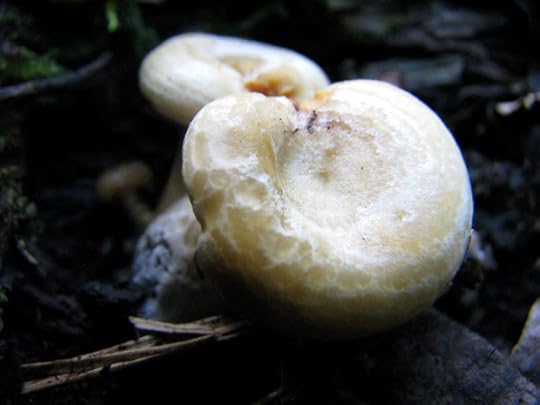Ariel Gordon's Blog, page 47
August 9, 2013
lollygagging
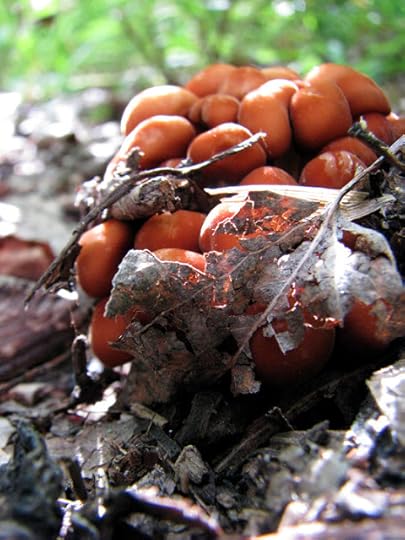
* * *
I have no idea what this is. It looked almost exactly like a cluster of grapes set down on the path, except rusty orange. (I want to go back and look at it again...)
Published on August 09, 2013 10:39
loitering
 All photos Assiniboine Forest, Winnipeg, MB. August 8, 2013.* * *
All photos Assiniboine Forest, Winnipeg, MB. August 8, 2013.* * *Went for a walk in the forest with once and forever Winnipeg poet Tanis MacDonald and her friend Leena yesterday.
(I'll be interviewing Tanis about her The Daughter's Way: Canadian Women's Paternal Elegies for my Out of Town Authors series next week, speaking of which...)
I brought my camera but wasn't planning, necessarily, to take any pictures. But the pink mushrooms were out in full force and then there were other interesting specimens and then...so I made Tanis and Leena wait more than a few times.
My favourite moment of the walk came when I was squatting in the woods just off the main path, wanting to get pictures of this clump of Monotropa uniflora (also known as the ghost plant, Indian pipe, or corpse plant) and a dogwalker came up to Tanis, loitering to one side, and asked, "WHAT is she doing?"
It has been SUCH a good year for mushrooms and/or finding clumps of time to walk in said forest.
Published on August 09, 2013 10:33
August 8, 2013
A door, creaking shut
I’ve started sleeping in other people’s houses. My daughters’ rooms are splinters I can’t get out, doors creaking shut. It’s an endless awful sleepover.
Most of my zucchini went soft before I could eat it, thank you very much.
But maybe you’re right, maybe I need to be more practical. Or maybe I just need a good fistful of my neighbours’ pills, all gelatin and hardcore opiates.
I’m not sure I’m hardscrabble enough to survive you.
A hundred dead grackles, dark dusty brown feathers, on the ground in the yard three doors down. Not sick, not injured, just…unable to fly. And, then, dead.
I’m no henchman.
I have to decide. Do I build a proper hidey-hole, a dragon-hoard, a domain, and, then, defend it from desperate feral boys that I dimly recall from my daughters’ classroom photos, or, worse, don’t recognize at all?
Do I keep going as I have been, not acknowledging your misery, and accept my death how and when it comes?
Or do I spend what time I have left spying, a pile of ground glass trained on our tower of wind?
Why do you keep writing?
Part of me wants to know if you put them – those boys – in the ground. There’s no bigger fuck-you to your childhood, to the world, than to bury kids in your own back yard.
And even if you didn’t kill them, I wonder if some part of you didn’t say, “Four fewer mouths to fill. Four fewer enemies,” when you found them.
Fuck. Knowing that you – and others like you – are out there is what made me lonely.
What were you before?
* * *
Or, if you prefer, the audio version...
listen to ‘A door, creaking shut’ on Audioboo
* * *
This is part eight of the exquisite corpse Darryl Joel Berger and I are writing. (Darryl's got a list of the other seven parts here...)
I stole the hundred dead grackles from a news item in today's newspaper.
Most of my zucchini went soft before I could eat it, thank you very much.
But maybe you’re right, maybe I need to be more practical. Or maybe I just need a good fistful of my neighbours’ pills, all gelatin and hardcore opiates.
I’m not sure I’m hardscrabble enough to survive you.
A hundred dead grackles, dark dusty brown feathers, on the ground in the yard three doors down. Not sick, not injured, just…unable to fly. And, then, dead.
I’m no henchman.
I have to decide. Do I build a proper hidey-hole, a dragon-hoard, a domain, and, then, defend it from desperate feral boys that I dimly recall from my daughters’ classroom photos, or, worse, don’t recognize at all?
Do I keep going as I have been, not acknowledging your misery, and accept my death how and when it comes?
Or do I spend what time I have left spying, a pile of ground glass trained on our tower of wind?
Why do you keep writing?
Part of me wants to know if you put them – those boys – in the ground. There’s no bigger fuck-you to your childhood, to the world, than to bury kids in your own back yard.
And even if you didn’t kill them, I wonder if some part of you didn’t say, “Four fewer mouths to fill. Four fewer enemies,” when you found them.
Fuck. Knowing that you – and others like you – are out there is what made me lonely.
What were you before?
* * *
Or, if you prefer, the audio version...
listen to ‘A door, creaking shut’ on Audioboo
* * *
This is part eight of the exquisite corpse Darryl Joel Berger and I are writing. (Darryl's got a list of the other seven parts here...)
I stole the hundred dead grackles from a news item in today's newspaper.
Published on August 08, 2013 14:17
August 3, 2013
Bold combo of memoir, travelogue
Winnipeg Free Press - PRINT EDITION
Reviewed by Ariel Gordon
In Antarctica: An Amundsen Pilgrimage
By Jay Ruzesky
Nightwood Editions, 240 pages, $25
On his mother's side, British Columbia poet and professor Jay Ruzesky is a cousin, twice-removed, of Norwegian explorer Roald Amundsen.
Ruzesky's compelling new memoir, In Antarctica, tells the story of his trip to the Antarctic a century after his ancestor became the first person to set foot on the South Pole.
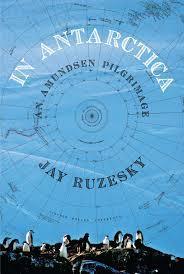 Ruzesky, who now teaches in Duncan, spent his childhood dreaming of the polar expeditions. But his adult life had been consumed by writing three collections of poetry and a novel, teaching and having a family.
Ruzesky, who now teaches in Duncan, spent his childhood dreaming of the polar expeditions. But his adult life had been consumed by writing three collections of poetry and a novel, teaching and having a family.
As the 2011 anniversary of Amundsen's achievement approached, Ruzesky tried to reconcile himself to not following in his ancestor's footsteps.
He failed. Instead, Ruzesky found himself online, booking a berth on a ship that would take him from Patagonia to the Antarctic.
What's more, he convinced his brother Scott to come along, even if his sibling's first question was, "Which one of us is Amundsen?"
Ruzesky knew he was incurring tens of thousands of dollars of debt but thought there might be a book in his trip across the ice. (Which, in case you're wondering, makes perfect economic sense to a poet.)
Structurally, In Antarctica parallels Ruzesky's 2011 trip with episodes from Amundsen's 1911 voyage on the Fram and his earlier expedition to the Antarctic on the Belgica in 1887. His title is obviously an homage to the late Bruce Chatwin's classic 1977 travel memoir, In Patagonia.
The sections from Ruzesky's point of view meld travel writing with memoir, which effectively sets the stage for the writer's month-long voyage.
For instance, though Ruzesky has called B.C. home for 20 years, he spent his childhood in the cold-weather climes of Winnipeg, Thunder Bay, Saskatoon and Calgary.
One story that would be familiar to anyone who grew up on the Prairies details how the entrance collapsed to the quinzee he and his schoolmates had built in their school playground in Thunder Bay.
This is meaningful, given that Amundsen's crew spent more than a year in a large hut connected to a series of snow caves on the Ross Ice Shelf before making their attempt on the pole.
Also interesting is Ruzesky's anecdote of a failed dog-sledging lesson in Whitehorse in 2002. Knowing that Amundsen's success in reaching the South Pole was largely attributed to his use of dogs instead of ponies, like his English rival Robert Falcon Scott, supercharges this story.
Ruzesky also includes meditations on exploration and cartography and provides context for Amundsen's journey by providing thumbnail sketches of other voyages to both the North and South poles.
The other half of In Antarctica is in Amundsen's voice, an incredibly detailed account that Ruzesky somehow cobbled together from the explorer's journals and photographs.
More importantly, these sections are very finely written. Ruzesky illuminates Amundsen's dreamy childhood and his possible motives for devoting his life to exploration instead of medicine, as his mother would have preferred.
Ruzesky's description of Admundsen's affair with the married Sigrid Castberg that preceded the 1911 voyage, however, read like the best historical fiction.
All of which is to say that In Antarctica is a bold and satisfying composite of creative non-fiction, memoir and travel writing.
Ariel Gordon is a Winnipeg poet whose paternal great-grandfather died on the shores of Antarctica's South Georgia Island in 1914.
Reviewed by Ariel Gordon
In Antarctica: An Amundsen Pilgrimage
By Jay Ruzesky
Nightwood Editions, 240 pages, $25
On his mother's side, British Columbia poet and professor Jay Ruzesky is a cousin, twice-removed, of Norwegian explorer Roald Amundsen.
Ruzesky's compelling new memoir, In Antarctica, tells the story of his trip to the Antarctic a century after his ancestor became the first person to set foot on the South Pole.
 Ruzesky, who now teaches in Duncan, spent his childhood dreaming of the polar expeditions. But his adult life had been consumed by writing three collections of poetry and a novel, teaching and having a family.
Ruzesky, who now teaches in Duncan, spent his childhood dreaming of the polar expeditions. But his adult life had been consumed by writing three collections of poetry and a novel, teaching and having a family.As the 2011 anniversary of Amundsen's achievement approached, Ruzesky tried to reconcile himself to not following in his ancestor's footsteps.
He failed. Instead, Ruzesky found himself online, booking a berth on a ship that would take him from Patagonia to the Antarctic.
What's more, he convinced his brother Scott to come along, even if his sibling's first question was, "Which one of us is Amundsen?"
Ruzesky knew he was incurring tens of thousands of dollars of debt but thought there might be a book in his trip across the ice. (Which, in case you're wondering, makes perfect economic sense to a poet.)
Structurally, In Antarctica parallels Ruzesky's 2011 trip with episodes from Amundsen's 1911 voyage on the Fram and his earlier expedition to the Antarctic on the Belgica in 1887. His title is obviously an homage to the late Bruce Chatwin's classic 1977 travel memoir, In Patagonia.
The sections from Ruzesky's point of view meld travel writing with memoir, which effectively sets the stage for the writer's month-long voyage.
For instance, though Ruzesky has called B.C. home for 20 years, he spent his childhood in the cold-weather climes of Winnipeg, Thunder Bay, Saskatoon and Calgary.
One story that would be familiar to anyone who grew up on the Prairies details how the entrance collapsed to the quinzee he and his schoolmates had built in their school playground in Thunder Bay.
This is meaningful, given that Amundsen's crew spent more than a year in a large hut connected to a series of snow caves on the Ross Ice Shelf before making their attempt on the pole.
Also interesting is Ruzesky's anecdote of a failed dog-sledging lesson in Whitehorse in 2002. Knowing that Amundsen's success in reaching the South Pole was largely attributed to his use of dogs instead of ponies, like his English rival Robert Falcon Scott, supercharges this story.
Ruzesky also includes meditations on exploration and cartography and provides context for Amundsen's journey by providing thumbnail sketches of other voyages to both the North and South poles.
The other half of In Antarctica is in Amundsen's voice, an incredibly detailed account that Ruzesky somehow cobbled together from the explorer's journals and photographs.
More importantly, these sections are very finely written. Ruzesky illuminates Amundsen's dreamy childhood and his possible motives for devoting his life to exploration instead of medicine, as his mother would have preferred.
Ruzesky's description of Admundsen's affair with the married Sigrid Castberg that preceded the 1911 voyage, however, read like the best historical fiction.
All of which is to say that In Antarctica is a bold and satisfying composite of creative non-fiction, memoir and travel writing.
Ariel Gordon is a Winnipeg poet whose paternal great-grandfather died on the shores of Antarctica's South Georgia Island in 1914.
Published on August 03, 2013 16:56
August 2, 2013
forest? golf course? precinct?
So I took the time this week to go for a couple of walks in the the former Southwood Golf Course, which adjoins the University of Manitoba.
Though Southwood had been at that location since 1894, shareholders were facing erosion on the riverbank holes and the need to renovate/rebuild their clubhouse, built in 1957.
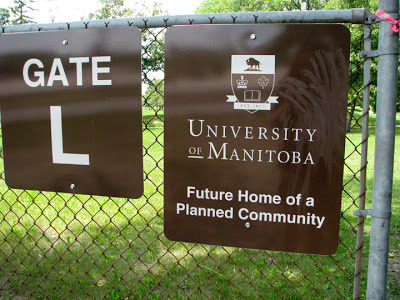 Shareholders elected to move the club to St. Norbert in 2011. The U of M bought the land and, thankfully, threw the doors open to the public, i.e. commuting cyclists, dog-walkers, and rampaging teenagers.
Shareholders elected to move the club to St. Norbert in 2011. The U of M bought the land and, thankfully, threw the doors open to the public, i.e. commuting cyclists, dog-walkers, and rampaging teenagers.
In September 2012, the U of M released a document that described its plans for what they're calling "the Southwood precinct."
Here's the opening snippet from the FAQ:
"Q. What does the University of Manitoba plan to do with the Southwood precinct?
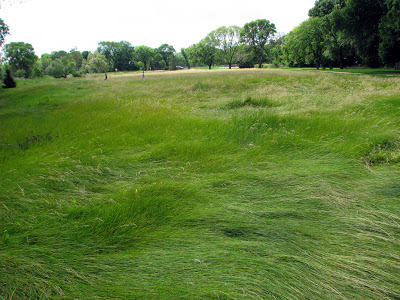 A. Taking ownership of the Southwood precinct offers a chance for the University of Manitoba to transform the entire Fort Garry campus and how people think about it. It is a rare opportunity to do something unique and transformative; to be aggressively sustainable in our thinking as we integrate the future development of the existing campus space with Southwood’s 120 acres, to allow for the future needs of the university while developing a vibrant interface with the community, in the form of a new, sustainable, multi-use neighbourhood. We see the potential for our campus community as a whole to become a 24/7 live/work/learn/play environment, shaped by five goals and guiding principles: connected, destination, sustainable, community, transformative. We will move away from being a commuter campus towards a vibrant campus community destination. Development will be determined by the result of an Open International Design Competition."
A. Taking ownership of the Southwood precinct offers a chance for the University of Manitoba to transform the entire Fort Garry campus and how people think about it. It is a rare opportunity to do something unique and transformative; to be aggressively sustainable in our thinking as we integrate the future development of the existing campus space with Southwood’s 120 acres, to allow for the future needs of the university while developing a vibrant interface with the community, in the form of a new, sustainable, multi-use neighbourhood. We see the potential for our campus community as a whole to become a 24/7 live/work/learn/play environment, shaped by five goals and guiding principles: connected, destination, sustainable, community, transformative. We will move away from being a commuter campus towards a vibrant campus community destination. Development will be determined by the result of an Open International Design Competition."
While I know how I feel about press releases that use language like "aggressively sustainable," I haven't quite figured out how I feel about the land and trees at Southwood.
Southwood staff have been "aggressively managing" the land for nearly a hundred years, planting and maintaining carpets of non-native grasses via pesti- and herbicides.
U of M gardeners have been doing minimal mowing around the golf cart paths, letting the fairways grow in. This has created a series of mono-culture meadows, which are lovely to look at and even sort of fun to trudge through. When I was there I even saw two pre-teen boys galloping through the meadow behind their house with butterfly nets, though I think they were mostly catching dragonflies, the small orange and the large blue ones.
The greens have become completely overgrown with invasive weed species and there are several large clumps of thistles throughout the property, which are now releasing seeds and which will likely get much larger unless they are also managed.
In addition to the grasses, Southwood's 120 acres is also home to a mix of native trees like oaks and elms and a variety of ornamental/non-native trees and shrubs. And while there are a lot of mature oaks, there are also a lot of heavily heavily pruned, dying, and dead trees, which U of M gardeners seem to be slowly removing.
All of which is to say that there were few to no mushrooms and even though we found apple trees in one spot and saskatoons in another, I had no inclination to pick any of the fruit.
All of which is to say that I probably won't walk there again. In addition to the fact that it feels like a strangely neglected park instead of a forest, I don't want to get too attached. Half to three-quarters of the trees might be gone in five years, "aggressively sustainable" development plan or no.
I'm an urban forest girl, so I was hoping that I would be able to add Southwood to the roster of forests that I visit. But the land and the trees there will need a couple of more years to return to a semi-wild state and I'm not very interested in parks, neglected or otherwise.
I'm going to try to convince someone from the U of M's Natural Resources Institute to walk with me at Southwood in the coming weeks, to see how a ecologist would view the processes at work at there.
Though Southwood had been at that location since 1894, shareholders were facing erosion on the riverbank holes and the need to renovate/rebuild their clubhouse, built in 1957.
 Shareholders elected to move the club to St. Norbert in 2011. The U of M bought the land and, thankfully, threw the doors open to the public, i.e. commuting cyclists, dog-walkers, and rampaging teenagers.
Shareholders elected to move the club to St. Norbert in 2011. The U of M bought the land and, thankfully, threw the doors open to the public, i.e. commuting cyclists, dog-walkers, and rampaging teenagers. In September 2012, the U of M released a document that described its plans for what they're calling "the Southwood precinct."
Here's the opening snippet from the FAQ:
"Q. What does the University of Manitoba plan to do with the Southwood precinct?
 A. Taking ownership of the Southwood precinct offers a chance for the University of Manitoba to transform the entire Fort Garry campus and how people think about it. It is a rare opportunity to do something unique and transformative; to be aggressively sustainable in our thinking as we integrate the future development of the existing campus space with Southwood’s 120 acres, to allow for the future needs of the university while developing a vibrant interface with the community, in the form of a new, sustainable, multi-use neighbourhood. We see the potential for our campus community as a whole to become a 24/7 live/work/learn/play environment, shaped by five goals and guiding principles: connected, destination, sustainable, community, transformative. We will move away from being a commuter campus towards a vibrant campus community destination. Development will be determined by the result of an Open International Design Competition."
A. Taking ownership of the Southwood precinct offers a chance for the University of Manitoba to transform the entire Fort Garry campus and how people think about it. It is a rare opportunity to do something unique and transformative; to be aggressively sustainable in our thinking as we integrate the future development of the existing campus space with Southwood’s 120 acres, to allow for the future needs of the university while developing a vibrant interface with the community, in the form of a new, sustainable, multi-use neighbourhood. We see the potential for our campus community as a whole to become a 24/7 live/work/learn/play environment, shaped by five goals and guiding principles: connected, destination, sustainable, community, transformative. We will move away from being a commuter campus towards a vibrant campus community destination. Development will be determined by the result of an Open International Design Competition." While I know how I feel about press releases that use language like "aggressively sustainable," I haven't quite figured out how I feel about the land and trees at Southwood.
Southwood staff have been "aggressively managing" the land for nearly a hundred years, planting and maintaining carpets of non-native grasses via pesti- and herbicides.
U of M gardeners have been doing minimal mowing around the golf cart paths, letting the fairways grow in. This has created a series of mono-culture meadows, which are lovely to look at and even sort of fun to trudge through. When I was there I even saw two pre-teen boys galloping through the meadow behind their house with butterfly nets, though I think they were mostly catching dragonflies, the small orange and the large blue ones.
The greens have become completely overgrown with invasive weed species and there are several large clumps of thistles throughout the property, which are now releasing seeds and which will likely get much larger unless they are also managed.
In addition to the grasses, Southwood's 120 acres is also home to a mix of native trees like oaks and elms and a variety of ornamental/non-native trees and shrubs. And while there are a lot of mature oaks, there are also a lot of heavily heavily pruned, dying, and dead trees, which U of M gardeners seem to be slowly removing.
All of which is to say that there were few to no mushrooms and even though we found apple trees in one spot and saskatoons in another, I had no inclination to pick any of the fruit.
All of which is to say that I probably won't walk there again. In addition to the fact that it feels like a strangely neglected park instead of a forest, I don't want to get too attached. Half to three-quarters of the trees might be gone in five years, "aggressively sustainable" development plan or no.
I'm an urban forest girl, so I was hoping that I would be able to add Southwood to the roster of forests that I visit. But the land and the trees there will need a couple of more years to return to a semi-wild state and I'm not very interested in parks, neglected or otherwise.
I'm going to try to convince someone from the U of M's Natural Resources Institute to walk with me at Southwood in the coming weeks, to see how a ecologist would view the processes at work at there.
Published on August 02, 2013 11:17
July 25, 2013
A season later
 July 20, 2013.
July 20, 2013.
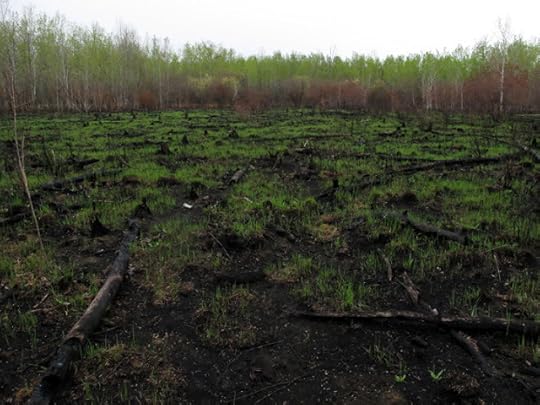 May 19, 2013.
May 19, 2013.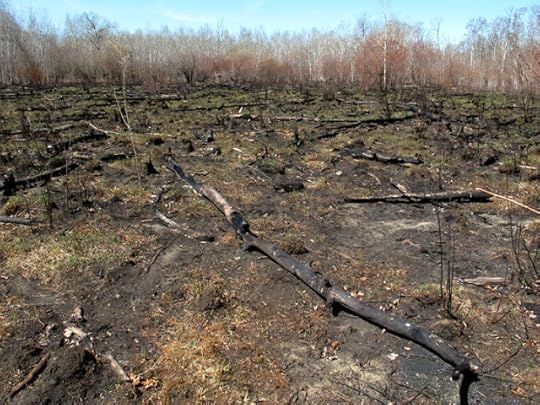 May 12, 2013.
May 12, 2013.* * *
I've been visiting this burned-out clearing in the forest semi-regularly this spring. To see how it recovers from last fall's fire but also to see what grows there, now that the logs that made it different from the rest of the forest have been burned down.
So far, there are fine-textured grasses, a few invasive thistles and clumps of bullrushes.
When I was standing there with my camera, something moved in the grasses near me, which I found both startling and soothing. And then I went to find some mushrooms.
Published on July 25, 2013 09:04
July 22, 2013
not a great specimen
Published on July 22, 2013 09:28
not a mushroom
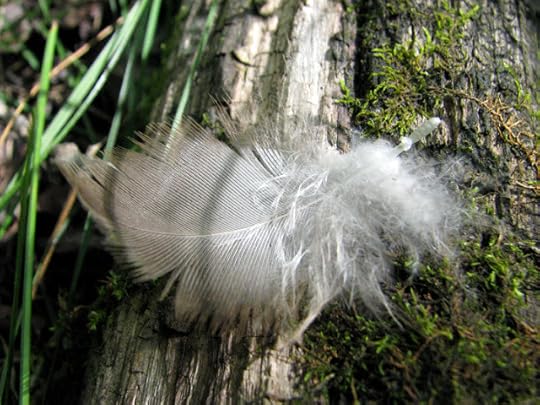
* * *
This small feather on a log, gleaming in the sun. (Other feathers nearby, their donor someone's rough mouthful...)
Published on July 22, 2013 09:25
not sharp
 All photos Assiniboine Forest, Winnipeg, MB. July 20, 2013.* * *
All photos Assiniboine Forest, Winnipeg, MB. July 20, 2013.* * *The clump of coral fungi in this photo isn't sharp. But, somehow, this one photo makes the whole walk worth it...
The forest was nearly empty Saturday afternoon, after a week of cool weather, after weeks of hot buggy weather.
Which is how I like it. I'd trade a hot dry summer for a wet hot buggy summer in a second, given the choice. So I've been enjoying all the greenery, all the persistent clumps of mushrooms, lifting the leaf litter, bursting out of the mulch.
This walk was remarkable for exuberant poison ivy in the understory but also the thumbnail-sized frogs, fleeing. For the mosquitoes on the sweat blooming on my hairline and the small orange butterflies on the purple vetch.
Published on July 22, 2013 09:15
July 18, 2013
How to Launch Your Book: part three
When your book arrives, spend a day looking at it. Weep with gratitude.
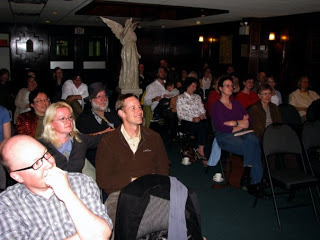 The crowd at the 2009 launch of Guidelines.Then begin to plan your reading at the launch.
The crowd at the 2009 launch of Guidelines.Then begin to plan your reading at the launch.
Ideally, your reading would be between 15-20 minutes: long enough to give people a good taste of the work but short enough to leave enough time for signing.
If you're reading with anyone else, you should max out at 10-12 minutes and maybe even 7-10 minutes...
Rehearse often so that you don’t weep or giggle or burp in the middle of your reading, unless you can weep/giggle/burp charmingly.
(Even if you’ve given heaps of readings and are usually as cool as the proverbial cucumber. Because launches make for a whole other level of reading-anxiety.)
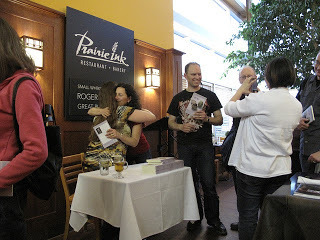 Ariel hugging/signing books at the 2010 launch of Hump.“For a book launch, or any longer reading, I order a set of pieces days in advance and read that set over and over again until each piece settles into its proper place and the words themselves become comfortable in the mouth. Planning and practice for me is key — no matter how many times I’ve read the poems previously,” says Ottawa poet Sandra Ridley, who has two collections of poetry to her name.
Ariel hugging/signing books at the 2010 launch of Hump.“For a book launch, or any longer reading, I order a set of pieces days in advance and read that set over and over again until each piece settles into its proper place and the words themselves become comfortable in the mouth. Planning and practice for me is key — no matter how many times I’ve read the poems previously,” says Ottawa poet Sandra Ridley, who has two collections of poetry to her name.
“Generally, I’m concerned with arcing a mood or atmosphere and don’t worry about a linear unfolding of the underlying narrative.”
Mark up your book with sticky notes or dog-eared corners or the page numbers written
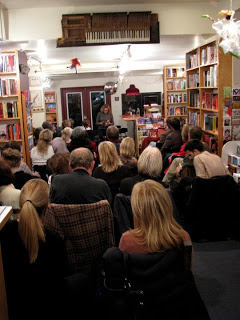 Laura Lush reading in Toronto in 2011.on a bookmark so that you don’t get confused,
Laura Lush reading in Toronto in 2011.on a bookmark so that you don’t get confused,
mid-reading, as to what you’re performing next.
Though it might feel contrived, have some sense of what you’re going to say between poems. If you want to thank specific people, write the names down and stick it in your book.
Now, not everyone at your launch will want you to sign their book…but the majority will. It’s proof they were there! It also functions a bit like a receiving line: people want to have their moment with you.
But this arcane launch ritual also gives you the chance to say something nice – in print – even if it’s just thanks for attending the launch and buying your book.
So think about what you’re going to write in people’s books. Only your name? Your name plus some witty phrase? What?
“If I know the person or have had time to talk with them I will try to write something specific to them but mostly I write generic crap like ‘Best’ or ‘Thanks for your support,’” says Steele.
“I have to concentrate hard on writing legibly as signing books is one of the very few occasions that I write by hand and not by computer anymore.”
It's also worth nothing that being inventive when you’ve got 50 books to sign, one after the other, is like being stuck in greeting card hell…
* * *
Thanks all, I hope this is useful!
 The crowd at the 2009 launch of Guidelines.Then begin to plan your reading at the launch.
The crowd at the 2009 launch of Guidelines.Then begin to plan your reading at the launch.Ideally, your reading would be between 15-20 minutes: long enough to give people a good taste of the work but short enough to leave enough time for signing.
If you're reading with anyone else, you should max out at 10-12 minutes and maybe even 7-10 minutes...
Rehearse often so that you don’t weep or giggle or burp in the middle of your reading, unless you can weep/giggle/burp charmingly.
(Even if you’ve given heaps of readings and are usually as cool as the proverbial cucumber. Because launches make for a whole other level of reading-anxiety.)
 Ariel hugging/signing books at the 2010 launch of Hump.“For a book launch, or any longer reading, I order a set of pieces days in advance and read that set over and over again until each piece settles into its proper place and the words themselves become comfortable in the mouth. Planning and practice for me is key — no matter how many times I’ve read the poems previously,” says Ottawa poet Sandra Ridley, who has two collections of poetry to her name.
Ariel hugging/signing books at the 2010 launch of Hump.“For a book launch, or any longer reading, I order a set of pieces days in advance and read that set over and over again until each piece settles into its proper place and the words themselves become comfortable in the mouth. Planning and practice for me is key — no matter how many times I’ve read the poems previously,” says Ottawa poet Sandra Ridley, who has two collections of poetry to her name. “Generally, I’m concerned with arcing a mood or atmosphere and don’t worry about a linear unfolding of the underlying narrative.”
Mark up your book with sticky notes or dog-eared corners or the page numbers written
 Laura Lush reading in Toronto in 2011.on a bookmark so that you don’t get confused,
Laura Lush reading in Toronto in 2011.on a bookmark so that you don’t get confused,mid-reading, as to what you’re performing next.
Though it might feel contrived, have some sense of what you’re going to say between poems. If you want to thank specific people, write the names down and stick it in your book.
Now, not everyone at your launch will want you to sign their book…but the majority will. It’s proof they were there! It also functions a bit like a receiving line: people want to have their moment with you.
But this arcane launch ritual also gives you the chance to say something nice – in print – even if it’s just thanks for attending the launch and buying your book.
So think about what you’re going to write in people’s books. Only your name? Your name plus some witty phrase? What?
“If I know the person or have had time to talk with them I will try to write something specific to them but mostly I write generic crap like ‘Best’ or ‘Thanks for your support,’” says Steele.
“I have to concentrate hard on writing legibly as signing books is one of the very few occasions that I write by hand and not by computer anymore.”
It's also worth nothing that being inventive when you’ve got 50 books to sign, one after the other, is like being stuck in greeting card hell…
* * *
Thanks all, I hope this is useful!
Published on July 18, 2013 07:56

